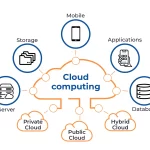The Ethics of Artificial Intelligence and Machine Learning
Bias and Fairness: One of the primary ethical concerns in AI and ML is bias. Machine learning algorithms learn from data, and if the data contains biases or discriminatory patterns, the AI systems can perpetuate and amplify them. It is essential to identify and mitigate biases in AI systems to ensure fair and unbiased outcomes, especially in areas like hiring, lending, and criminal justice.
Transparency and Explainability: AI algorithms can be complex and opaque, making it challenging to understand how they arrive at specific decisions or recommendations. Lack of transparency raises concerns about accountability and the potential for unjust or discriminatory outcomes. Ensuring transparency and explainability in AI systems is vital for building trust and understanding the logic behind AI-driven decisions.
Privacy and Data Protection: AI and ML heavily rely on vast amounts of data, often personal and sensitive information. Protecting individuals’ privacy and ensuring the responsible use of data is critical. Striking a balance between data collection for AI training and respecting individuals’ privacy rights is essential to maintain trust and prevent misuse of personal information. Job Displacement and Socioeconomic Impact: As AI and automation continue to advance, there are concerns about job displacement and its impact on society. It is crucial to consider the potential consequences of AI-driven automation and develop strategies to mitigate the negative effects on employment.
This may involve reskilling and upskilling workers to adapt to the changing job landscape. Autonomous Systems and Decision-Making: The rise of autonomous systems, such as self-driving cars or AI-powered healthcare systems, raises questions about responsibility and accountability. Who is liable when accidents happen, or when an autonomous system makes a critical decision? Establishing frameworks to address these questions and defining the roles and responsibilities of AI systems is crucial for their ethical deployment.
Ethical Use of AI in Warfare and Surveillance: The military and surveillance applications of AI raise ethical concerns regarding the potential for abuse and violation of human rights. Discussions around the development and use of AI in warfare and surveillance must address questions of proportionality, transparency, and adherence to international laws and norms.
As artificial intelligence and machine learning continue to shape our world, it is essential to consider the ethical implications that accompany their rapid advancement. Addressing bias and fairness, promoting transparency and explainability, protecting privacy, mitigating job displacement, establishing accountability for autonomous systems, and ensuring the ethical use of AI in warfare and surveillance are critical steps in responsible AI development. By proactively addressing these ethical challenges, we can shape a future where AI and ML technologies contribute positively to society while upholding fundamental values and ethical principles.


































